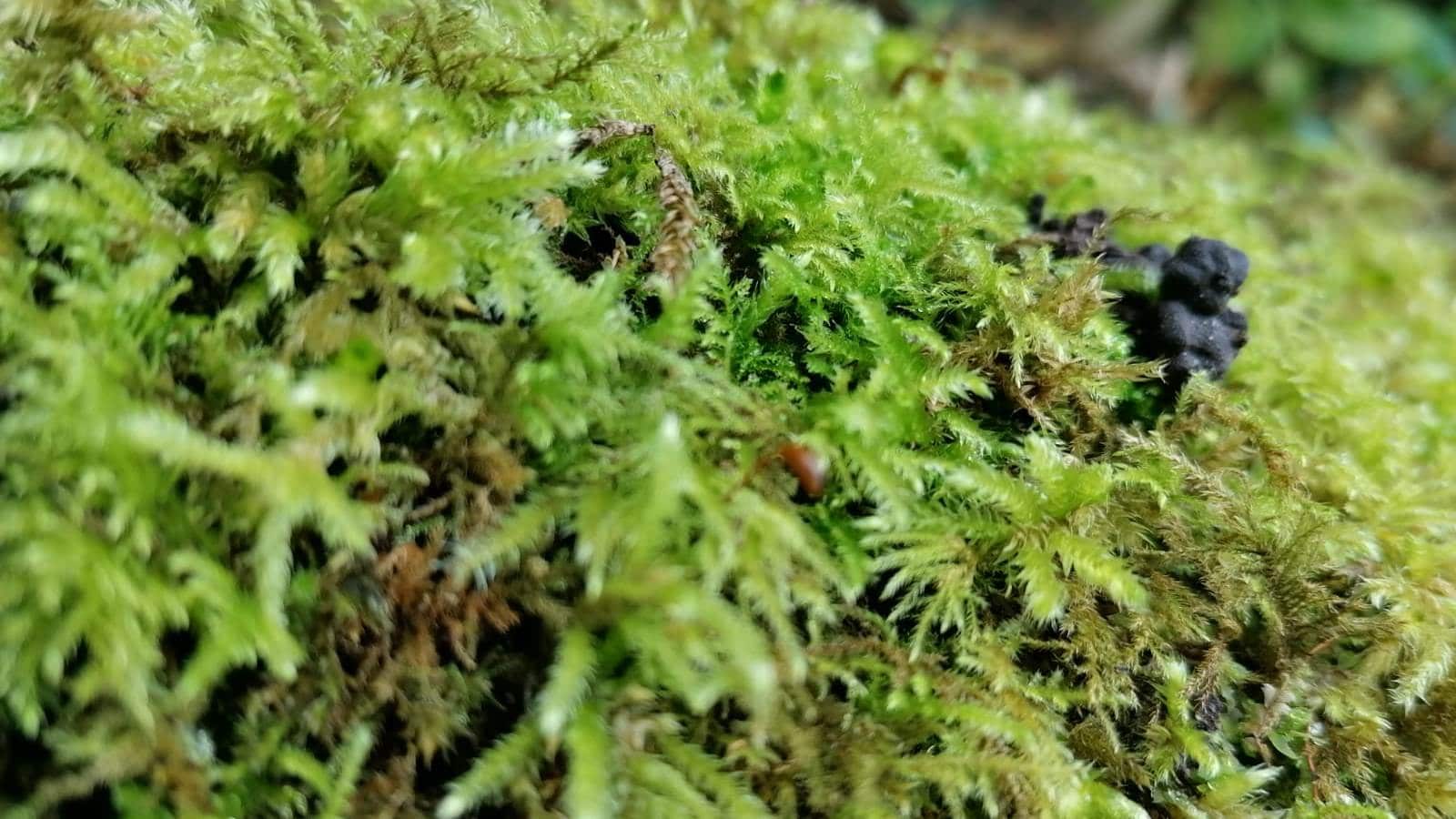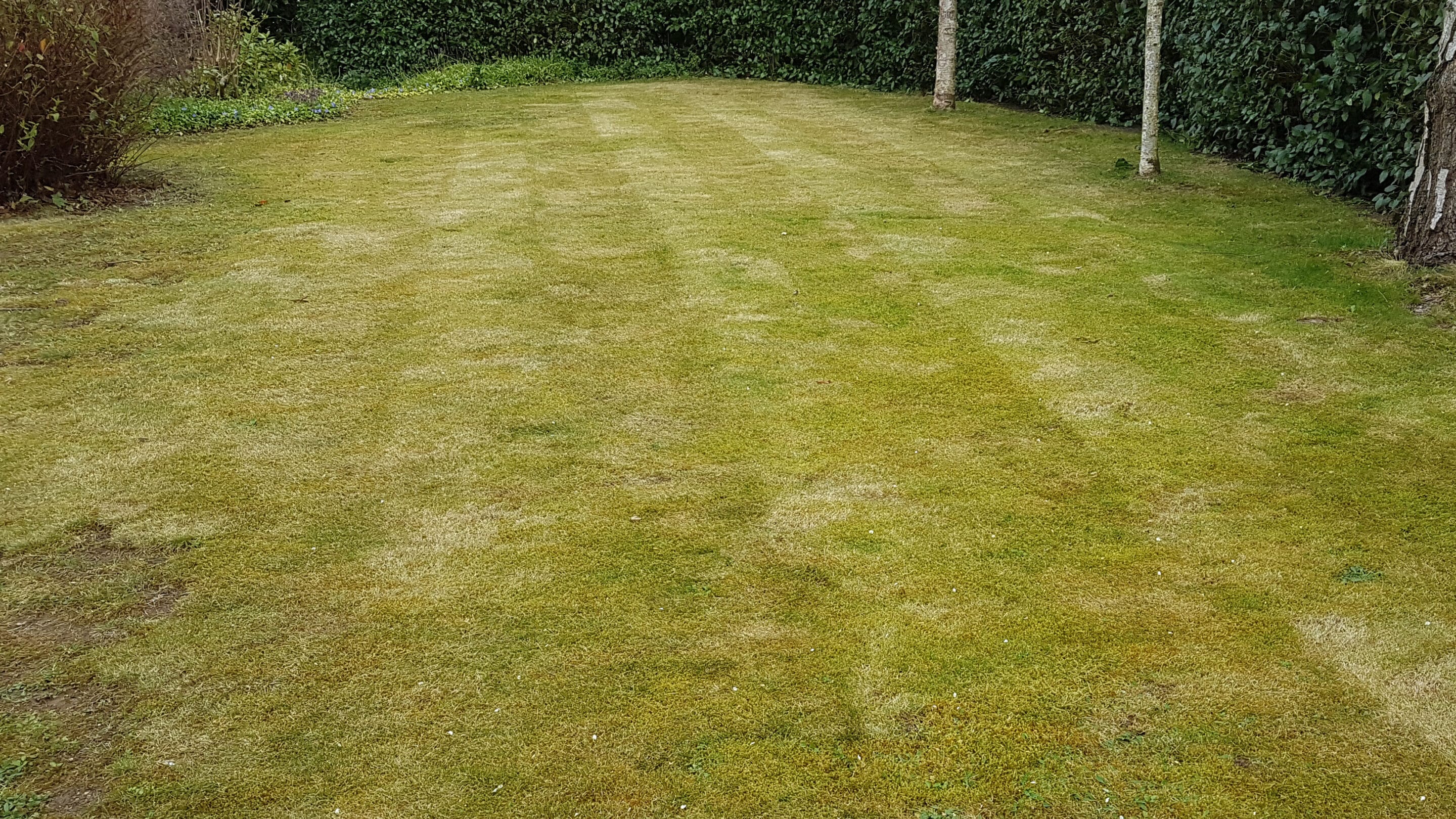
Moss appears in most English lawns and gardens during the late autumn and throughout the winter months as conditions become damp and dull. During the mid-summer months, it becomes dormant and dries out until damp weather returns.
What exactly is moss?
Moss is a type of plant that can thrive in damp, shady conditions so commonly makes an appearance over autumn and Winter. Moss needs water to survive because male cells need water to reach female cells for fertilisation. It can spring up in the most unlikely of places like driveways and roofs but can rapidly pitch and spread across a lawn. Though from afar, a lawn with moss can appear green and lush, but a closer look can reveal a clumped, matted appearance with patchy and uneven colouring. There are many varieties of moss but the most common found in UK lawns is Rhytidiadelphus Squarrous (Springy turf moss).
Moss does not have true roots or leaves and does not flower to pollinate but reproduces through spores. This can make control difficult as the tiniest spores can be brought into the garden (through wind or on animals) and can quickly develop given the right conditions. Its development can be a sign of minor underlying issues with the lawn because it tends to only invade where it has the space to do so therefore addressing this can prevent it taking hold in future.
Why do we treat Moss in our lawns?
Moss can be detrimental to the condition of the lawn because over time it can form a thick layer which will choke out the grass plants. Moss tends to form readily in thin or shady areas of the lawn where it has space to thrive. Lawns with a thick healthy grass sward are less affected as moss is unable to establish.
Shady or sheltered gardens provide the perfect environment for moss to form as well as any location that is damp for a prolonged period.
Why should moss be removed from lawns?
Although moss has its uses, left untreated in a lawn it can form a thick carpet over and around the grass making it difficult to mow, choking the grass plants, making the lawn look patchy or uneven in terms of colour and generally ruining the quality.
Moss will grow in shady spots on the lawn – often underneath trees where the grass is already thinner and next to walls and fences where light and airflow is reduced. Thick, healthy grass is less likely to be affected by moss as there is less space for the moss to take hold. If your garden has poor drainage or acidic soil conditions, it will be more susceptible to moss. In addition, lawns already sparse and in poor condition from overuse or close mowing are prone to moss development. Therefore, removing moss and keeping it under control can help improve both the appearance and quality of your lawn.
What can I do about moss in my lawn?
There are many ways to control moss in a garden environment and this can be done both culturally and chemically without the use of pesticides. We have a comprehensive guide on how to control moss in my lawn here, which covers topics such as how to prevent moss and how to treat if you have a moss problem

